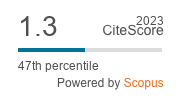Digital Distribution as an E‑commerce Sales Channel
DOI:
https://doi.org/10.18778/1508-2008.25.06Keywords:
digital distribution, e‑commerce, sales channel, digital productAbstract
In a matter of decades, digital technologies have transformed the way we communicate with others, conduct business, produce goods and services, as well as the way we live, work, and spend our spare time. These, often rapid, developments hold a lot of promise for the future, in terms of wealth generation, technological advances, and improving the quality of life. At the same time, they also bring challenges associated with a lack of skills, new and fast‑emerging markets, consumer protection, industrial re‑organization, trust, security, and privacy.
The private life of society, as well as the world of business, have moved to the virtual world. The transformation to e‑business is complex, and to be successful, a balance needs to be struck between strategy, a customized business model, the relevant processes, and the technology used.
The aim of the article is to present the essence of digital distribution and the key factors in the dynamics of its development. Secondary data on the development of digital distribution in the world and in Europe over the past 20 years are presented, and the forecasts for the coming years are calculated.
Downloads
References
Armstrong, G., Adam, S., Denize, S., Kotler, P. (2014), Principles of Marketing, Pearson, Sydney.
Google Scholar
Caraiani, G. (2008), Tranzactii internationale: E‑business & tipuri de contracte, C.H. Beck, Bucuresti.
Google Scholar
Cohen‑Almagor, R. (2011), Internet History, “International Journal of Technoethics”, 2 (2), pp. 45–64, https://doi.org/10.4018/jte.2011040104
Google Scholar
DOI: https://doi.org/10.4018/jte.2011040104
Dent, J. (2011), Distribution Channels: Understanding and Managing Channels to Market, Kogan Page, London–Philadelphia.
Google Scholar
Digital Distribution Market – Global Industry Analysis, Size, Share, Growth, Trends and Forecast 2017–2025 (2020), https://www.transparencymarketresearch.com/digital‑distribution‑market.html (accessed: 31.12.2020).
Google Scholar
Eurostat, Eurostat Survey on ICT Usage in Households and by Individuals, http://ec.europa.eu/eurostat/web/information‑society/data/comprehensive‑database (accessed: 5.12.2016).
Google Scholar
Furr, N., Shipilov, A. (2019), Digital Doesn’t Have to Be Disruptive, “Harvard Business Review”, 97 (4), pp. 94–103.
Google Scholar
Hoffman, D.L., Novak, T.P., Stein, R. (2012), The Digital Consumer, [in:] R.W. Belk, R. Llamas (eds.), The Routledge Companion to Digital Consumption, Routledge, Abingdon–Oxon, pp. 28–38.
Google Scholar
Katz, A. (2015), Games on the Phone, “Electronic Games Magazine”, November 28, pp. 23–35.
Google Scholar
Kotler, P. (2003), Marketing Insights from A to Z. 80 Concepts Every Manager Needs To Know, John Wiley & Sons, Hoboken.
Google Scholar
Lambrecht, A., Goldfarb, A., Bonatti, A., Ghose, A., Goldstein, D., Lewis, R., Rao A., Sahni, N. Yao, S. (2014), How Do Firms Make Money Selling Digital Goods Online?, “Marketing Letters”, 25 (3), pp. 331–341, https://www.researchgate.net/publication/278393875_How_do_firms_make_money_selling_digital_goods_online (accessed: 31.12.2020).
Google Scholar
DOI: https://doi.org/10.1007/s11002-014-9310-5
Maigret, E. (2015), Sociologie de la Communication et des Médias, Armand Colin, Paris, https://doi.org/10.3917/arco.maigr.2015.01
Google Scholar
DOI: https://doi.org/10.3917/arco.maigr.2015.01
Naughton, J. (2016), The evolution of the Internet: from military experiment to General Purpose Technology, “Journal of Cyber Policy”, 1 (1), pp. 5–28, https://doi.org/10.1080/23738871.2016.1157619
Google Scholar
DOI: https://doi.org/10.1080/23738871.2016.1157619
Nishio, S., Kishino, F. (2003), Advanced Multimedia Content Processing: First International Conference, Proceedings. Lecture Notes in Computer Science, Springer, Berlin–Heidelberg.
Google Scholar
Ojala, A. (2016), Business models and opportunity creation: How IT entrepreneurs create and develop business models under uncertainty, “Information Systems Journal”, 26 (5), pp. 451–476, https://doi.org/10.1111/isj.12078
Google Scholar
DOI: https://doi.org/10.1111/isj.12078
Peltz, Ph. (2013), Digital Distribution Models Reviewed: The Content Provider’s Perspective, [in:] P. Tschmuck, L. Philip, P.S. Campbell (eds.), Music Business and the Experience Economy. The Australasian Case, Springer, Heidelberg, pp. 99–117, https://doi.org/10.1007/978-3-642-27898-3_7
Google Scholar
DOI: https://doi.org/10.1007/978-3-642-27898-3_7
Petouhoff, N. (2006), The Business Impact of Change Management, Graziado Business Review, 9 (3), pp. 1–8.
Google Scholar
Downloads
Published
How to Cite
Issue
Section
License

This work is licensed under a Creative Commons Attribution-NonCommercial-NoDerivatives 4.0 International License.











